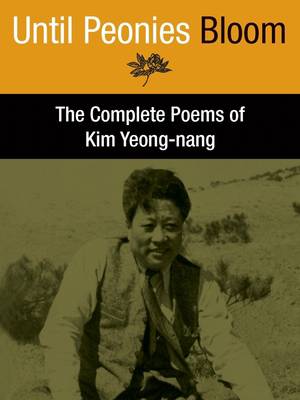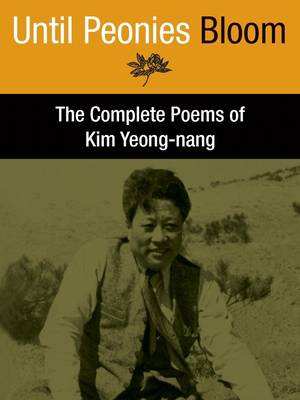
- Retrait gratuit dans votre magasin Club
- 7.000.000 titres dans notre catalogue
- Payer en toute sécurité
- Toujours un magasin près de chez vous
- Retrait gratuit dans votre magasin Club
- 7.000.0000 titres dans notre catalogue
- Payer en toute sécurité
- Toujours un magasin près de chez vous
34,45 €
+ 68 points
Format
Description
Kim Yeong-nang (1903-1950) is highly reputed in Korea for the delicate lyricism of his poems. Yet in many ways he has remained little known, even in Korea, limited to a small number of often anthologized poems. Although he was a resolute opponent of Japanese colonial rule, he did not suffer frequent imprisonment, or death, so his role as a champion of Korean independence has largely been ignored. Killed in bombing near the start of the Korean War, he had no time to participate in the development of a new Korean poetry.
Many of Kim Yeong-nang's earlier poems clearly express opposition to Japanese rule; after Liberation in 1945, he wrote to express his agony at the looming conflict between leftists and rightists that he saw threatening to tear Korea apart. At the same time, most of his poems are bold experiments in forms of Modernism; his use of images and symbols as well as his exploration of native Korean rhythms make him one of the most rewarding and challenging poets of his time. He spent most of his life in his native Gangjin, far removed from the literary world of Seoul, and the beauty of the Jeolla Province landscapes, as well as its dialect's vocabulary, underlie his poetry. Text in Korean and EnglishSpécifications
Parties prenantes
- Auteur(s) :
- Traducteur(s):
- Editeur:
Contenu
- Nombre de pages :
- 187
- Langue:
- Anglais
Caractéristiques
- EAN:
- 9781937385033
- Date de parution :
- 31-07-11
- Format:
- Livre broché
- Format numérique:
- Trade paperback (VS)
- Dimensions :
- 150 mm x 201 mm
- Poids :
- 272 g

Les avis
Nous publions uniquement les avis qui respectent les conditions requises. Consultez nos conditions pour les avis.






